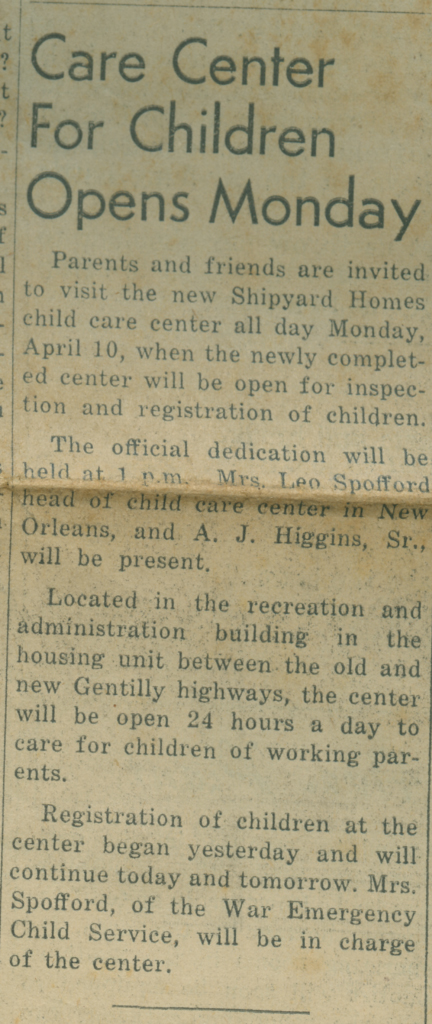Worker Wednesday: Childcare


This week, April 6-12, 2014 is the Week of the Young Child™, an annual celebration sponsored by the National Association for the Education of Young Children (NAEYC). In conjunction, this week’s Worker Wednesday touches on childcare in WWII.
April 1944 marked the end of the Higgins Industries publication, The Eureka News Bulletin and the rise of the new Higgins publication, The Higgins Worker. The new publication was more like a newspaper than a magazine—printed on newsprint, shorter in format and available to employees every Friday. The topics were current and concerned matters of everyday employee life, like childcare.
The need for womanpower during WWII brought to the forefront the issue of what to do with the kids while mom is at work. For the first time, there were more married women than single women in the workforce, some of them mothers. Childcare centers were opened around the nation. Federal subsidies from the Federal Works Administration provided extra support for communities, employers and families in need of childcare. Families paid fees which were capped at 50 cents per day in 1943 and 75 cents in July 1945. Some of them, including the one at Higgins Industries, even operated 24 hours a day, for mothers working evening and night shifts. The daycare at Higgins, opened 70 years ago this week, was located in Shipyard Homes, a public housing project established in 1943 to house employees and their families. In July 1944, there were a peak 3,102 federally-subsidized child care centers, enrolling 130,000 children. The center at the mammoth Kaiser Shipyards in Richmond, California could accommodate over 1,000 children. At the end of the war, many of the subsidized childcare facilities were closed under the assumption that the need was no longer there. California, the state with the most children enrolled in childcare, mounted the loudest protest against withdrawal of funding and some funds continued to flow into the program through early 1946. By July 1946, less than 1/3 of the wartime centers remained open.
Post by Curator Kimberly Guise.




Leave a Reply